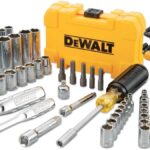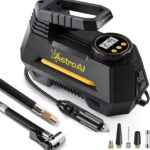Food trucks have become a powerful trend in the culinary world, offering chefs and entrepreneurs the flexibility to take their dishes directly to customers. But behind every successful food truck is more than just great food. It’s also about smart design, functionality, and branding. A custom food trucks isn’t just a vehicle; it’s your moving restaurant, marketing tool, and customer experience hub rolled into one. If you’re considering customizing a food truck, here are some practical tips to help you get started.

1. Prioritize Functionality in the Layout
The interior layout of your custom food trucks can make or break your operations. You’ll be working in a limited space, so every inch counts. Start by planning the workflow: where ingredients are stored, how food is prepared, and where it is served. Place equipment strategically to avoid unnecessary movement. For example, prep counters should be close to refrigeration, and fryers or grills should be next to ventilation systems. A well-thought-out layout ensures speed, safety, and efficiency during peak hours.
2. Choose the Right Equipment
Don’t overcrowd your truck with every appliance you think you’ll need. Instead, choose versatile, high-quality equipment that suits your menu. Compact refrigerators, multipurpose grills, and energy-efficient fryers can save space and money. Always consider durability, as your equipment will be on the move constantly and subject to vibrations and shifts.
3. Focus on Branding and Exterior Design
Your food truck isn’t just a kitchen—it’s also your biggest advertising tool. A striking, well-designed exterior can attract customers from afar. Bright colors, bold graphics, and clear signage with your logo make your truck instantly recognizable. Don’t forget to include your social media handles, website, or QR codes so customers can connect with you online. A professional and appealing design sets the tone for the customer experience.
4. Consider Health and Safety Regulations
Each city or state has its own set of rules for mobile food businesses. Before customizing your truck, research the health codes, licensing requirements, and safety regulations in your area. Make sure your design includes proper sinks, ventilation, fire extinguishers, and non-slip flooring. Compliance not only keeps your customers safe but also protects your business from fines or shutdowns.
5. Plan for Storage and Space Efficiency
Space is at a premium in food trucks. Smart storage solutions, like overhead shelves, magnetic strips for utensils, and compact cabinets, help you stay organized. Design your truck so that everything has its place, reducing clutter and improving workflow.
6. Think About Customer Experience
How your customers interact with your food truck matters as much as the food itself. Make sure your serving window is easily accessible, the menu is clearly displayed, and the pickup area is convenient. Adding small touches like ambient lighting or an awning for shade can make a big difference in customer comfort.
Final Thoughts
A custom food truck is more than a mobile kitchen. It’s a complete business on wheels. With thoughtful planning, efficient design, and a strong focus on branding and customer experience, you can create a truck that stands out in the competitive food scene. Remember: a well-designed food truck doesn’t just serve meals, it serves experiences.








